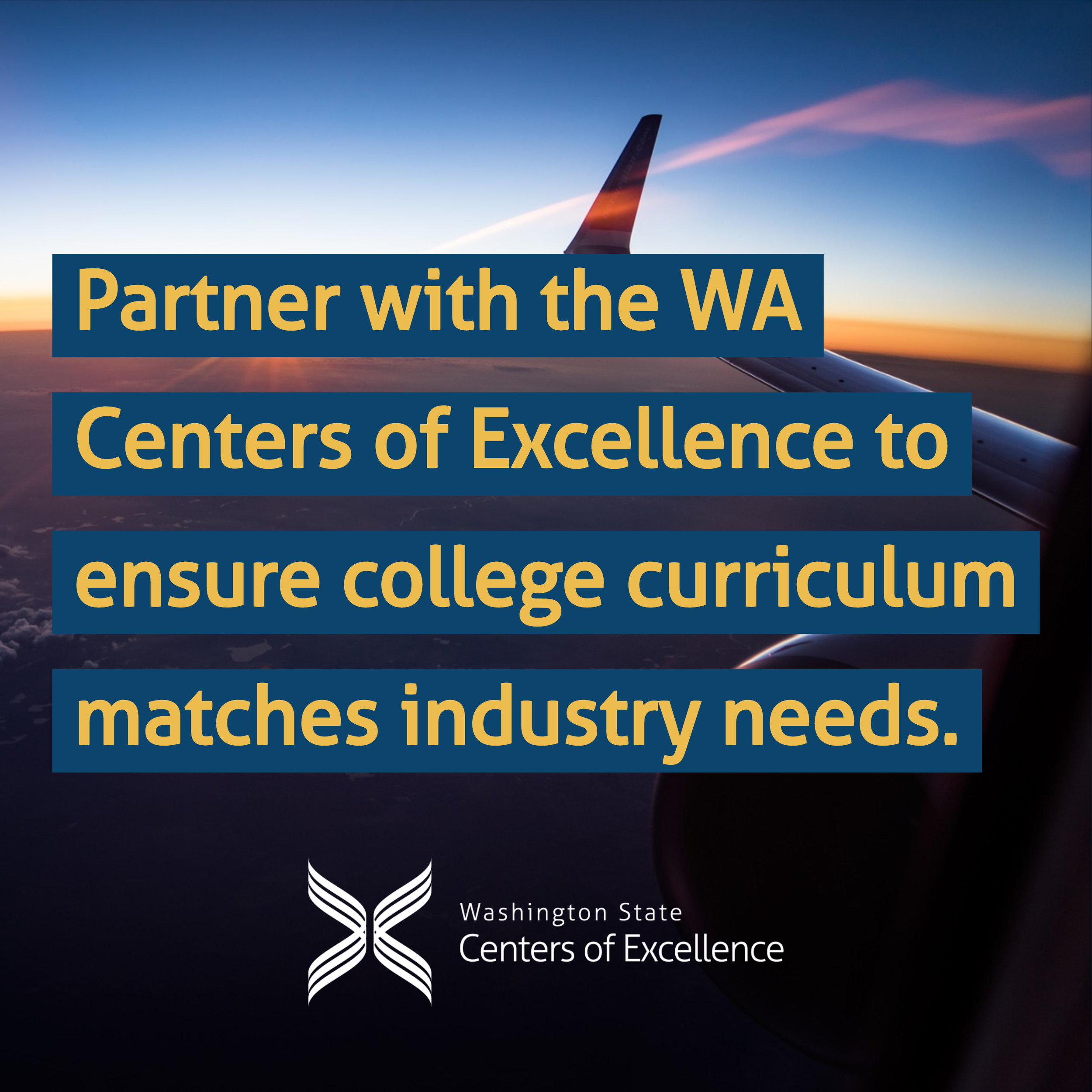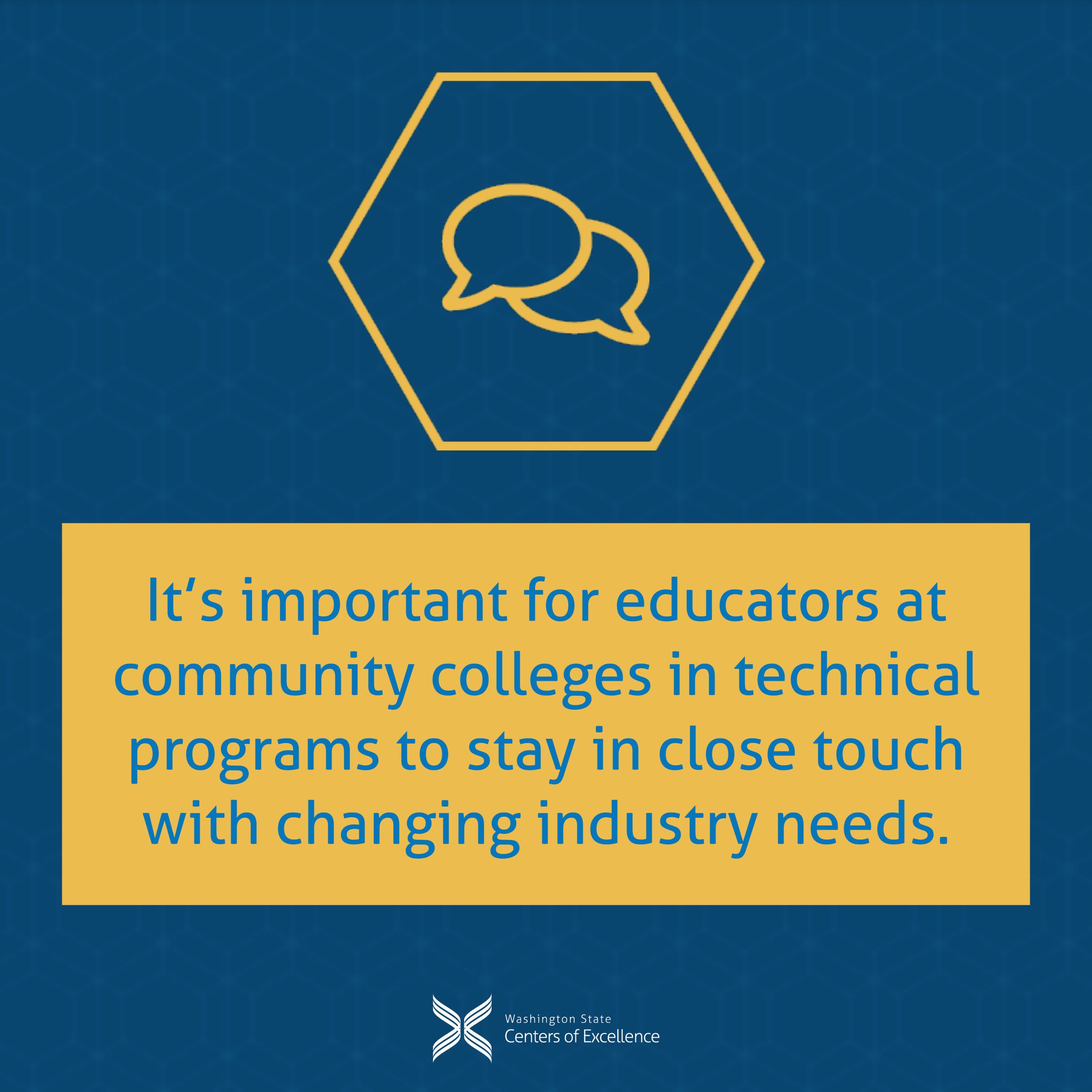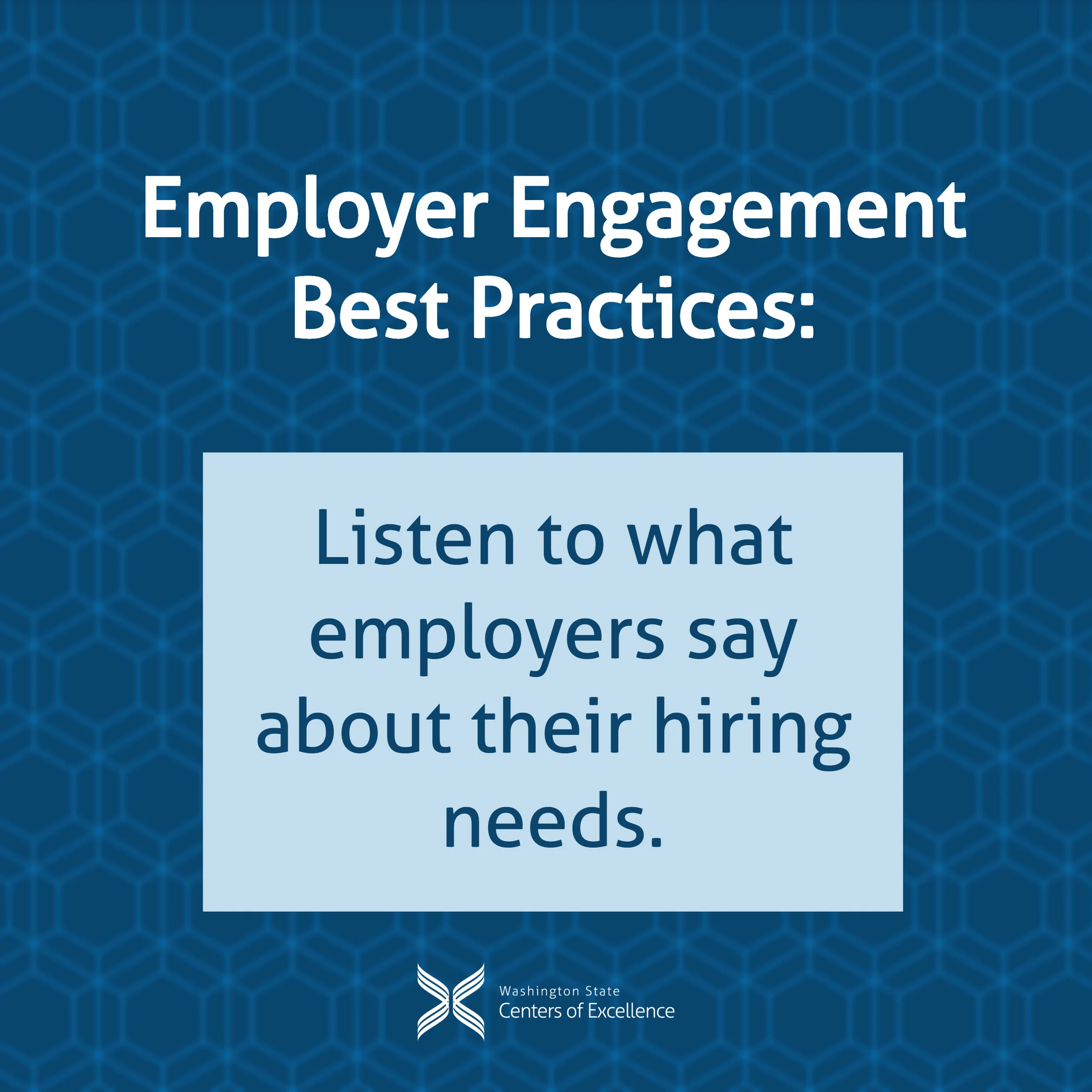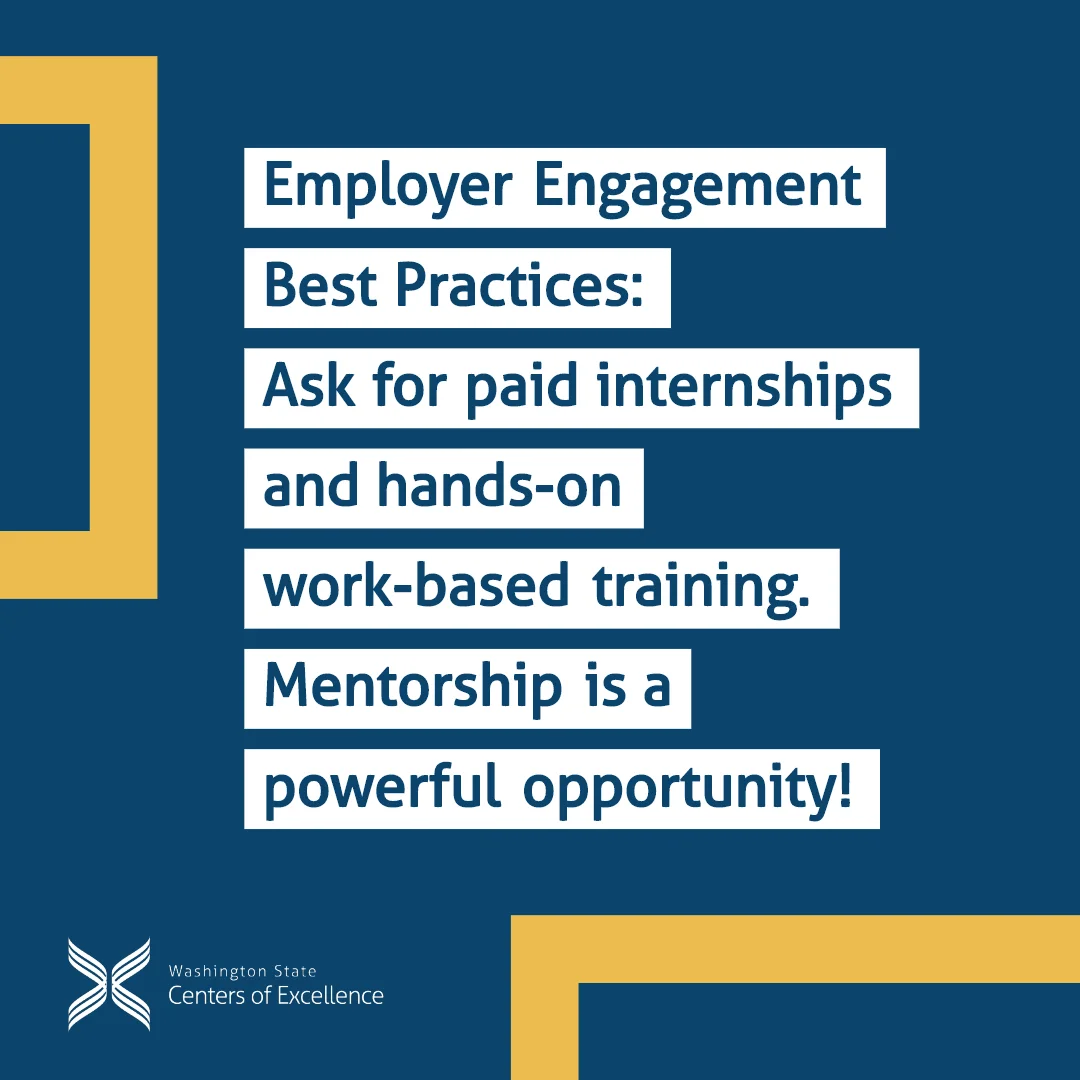How Washington Colleges Can Engage with Industry to Match Students with Employers’ Needs
Whether the job is repairing aircraft, manufacturing parts or flying a plane, most employers want to train new hires “their way” before somebody’s else’s techniques or technology intrude. And so they’re often willing to onboard new recruits before they’ve even completed their 2-year Associates degree. Employers can always help them continue in school or return to earn a 4-year degree. These are some of the reasons why it’s important for educators at community colleges in technical programs to stay in close touch with changing industry needs.
Mary Kaye Bredeson is the Executive Director at Washington’s Center of Excellence for Aerospace & Advanced Materials Manufacturing. She took the time recently to share her perspective and insights on successful employer engagement. Many faculty members and deans don’t have the luxury of meeting in person with industry reps, but the COE does that on their behalf, including at conferences, airshows and networking events. In the aerospace field, basic skills include automation, robotics, use of Programmable Logic Controllers (PLCs), pneumatics, hydraulics, electronics, computer skills and safety compliance.
One of the COE’s current projects involves mitigating the shortage of pilots, due to increased flight hours and certifications. It is also a very expensive program. Many veteran Army, Navy and Marine helicopter pilots just need their fixed wing certification to become commercial pilots. Colleges are looking to streamline this process and offer credit for prior learning. The FAA Reauthorization Act is looking at reauthorizing curriculum for all ‘Part 147’ schools across the nation. Part 147 colleges in Washington are Spokane CC, Big Bend CC, Clover Park Technical College, South Seattle and Everett Colleges. They are hoping with the new changes that the FAA will approve competency-based curriculum in order to give credit to transitioning veterans and others who may have already had training or work experience in repairing and maintaining planes.
In manufacturing, Ms. Bredeson described how COE partners with Boeing to connect them with Part 147 schools as they seek to hire people with an Airframe & Power plant (A&P) certification plus an avionics certification. Embedding six months to a year of avionics instruction into the A&P curriculum produces the trained and skilled workers Boeing needs. Some degree candidates start out with years of experience in the military working on planes or submarines using the same skillsets as those needed by civilian employers. Once certified by the FAA, they can get a job with Alaska, Delta or Southwest Airlines.
Mary Kaye offered these tips for educators on best practices for employer engagement:
When employers take the time to meet with you, don’t give them a ‘dog and pony show’ about your curriculum or programs or worse, ask for donations. Instead really listen to what they have to say about their latest and greatest hiring needs.
Follow through and maintain communications afterward despite any potential disruption from administrative or staffing changes on your end.
Help students navigate COE’s job postings and ask employers about any opportunities for paid internships and hands-on work-based training. It’s okay to ask them to mentor and engage your students directly.
Be aware of generational differences in preferred modes of communication, such as text messages vs. email and social media. Generation Z seems to be skipping resumes in favor of LinkedIn profiles apparently.
If an employer needs more people with a particular short term certification and colleges can deliver on that sort of request, Mary Kaye says “that makes a big difference in how quickly they’re able to upskill those workers” for longer term success in the aerospace industry.
Aerospace Center of Excellence has tools and resources to help employers find job applicants. These include the Recent Community College graduate matrix geared to aerospace advanced manufacturing, and an online newsletter and social media channels that feature standout students and college programs. The matrix tool is broken down by categories such as advanced manufacturing, process management, assembly, avionics, CNC machining and composites among other categories. Employers can also find out what colleges throughout the state are offering which programs.
Mary Kaye highlighted the importance of nationally-recognized certifications and noted she participates on the Legislation Committee of the Aviation Technical Education Council based in Washington, DC. She also encourages educators to “think outside the box” and reach out to interface with industry associations such as the Aerospace Futures Alliance (AFA) and the Pacific NW Aerospace Alliance. She says it’s important to build those relationships and it takes time, but often involves early evening networking receptions with appetizers and sometimes an interesting facility tour.
HELPFUL RESOURCES
Full text of the FAA Reauthorization Act of 2018
Recent Community College graduate matrix









